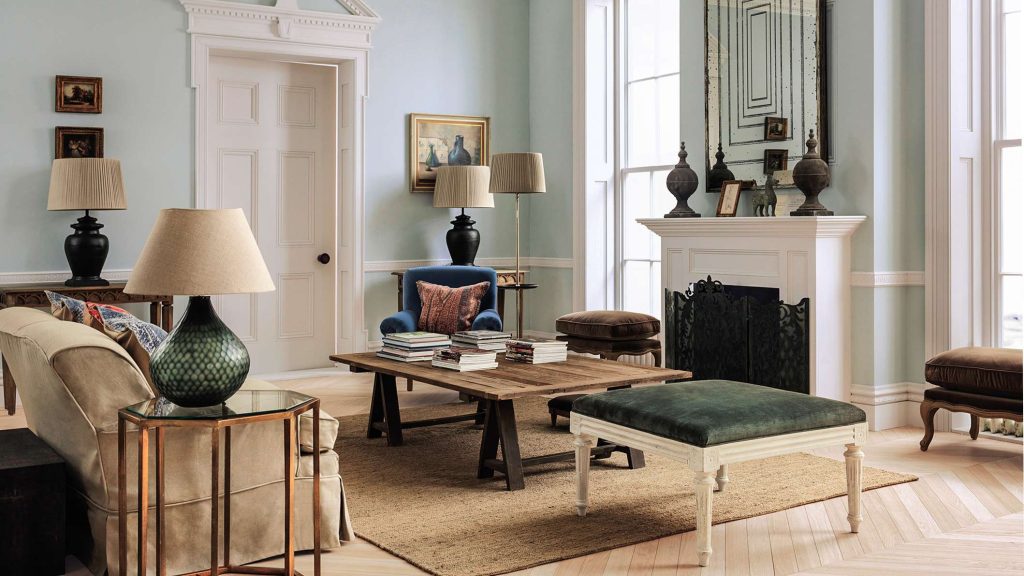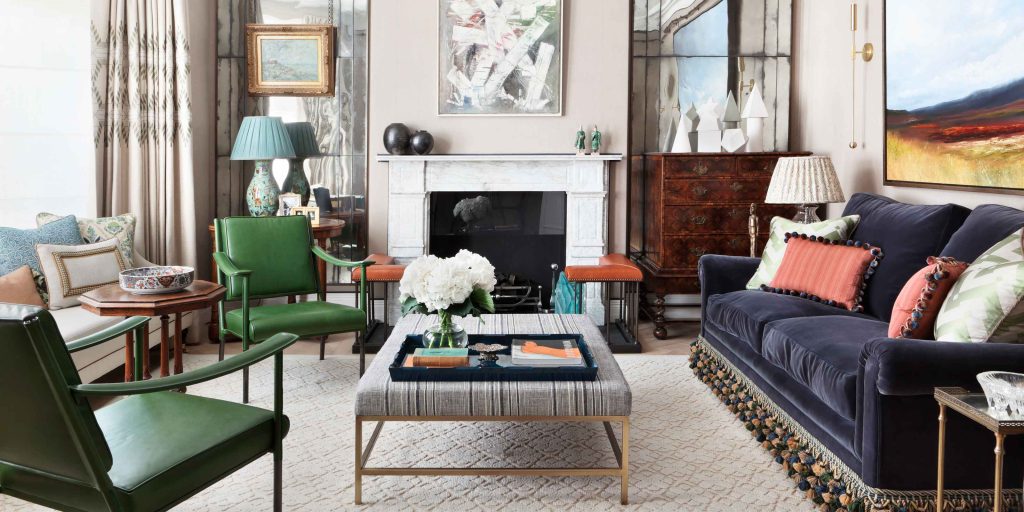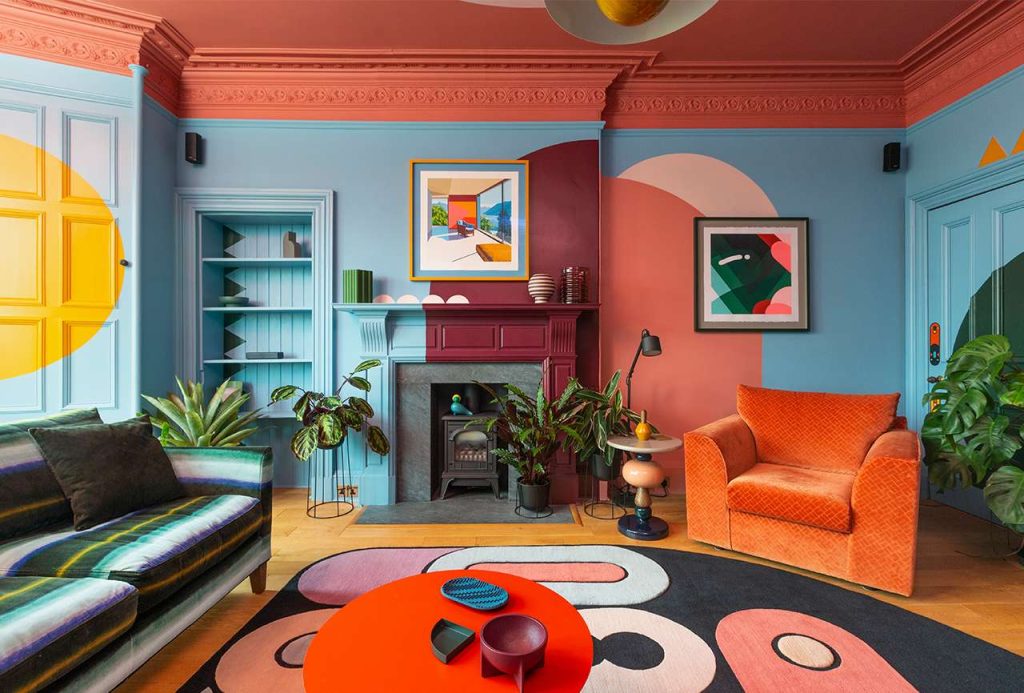Of course, home is where the family is; the smiles of your loved ones while saying goodnight, the family breakfasts in the cozy kitchen, and those popcorn nights when all of you watch a movie in the living room.
Yet, home is also where you can unleash your creativity and spread your imagination to its full potential. Your home is where your family recharges their batteries, has fun, studies, and makes life decisions. So, it is the most important place where you and your loved ones should feel safe and comfortable.
That comfortability can be achieved by implementing cohesive decor because such interior style can provide a harmonious atmosphere. In this article, we’ll talk about tips and tricks on how to decorate your house cohesively and make your place look fantastic. Let’s get started!

How to Decorate Your House Cohesively
As we said, you should eliminate advertised styles and leave your creative juices flowing. The key to the best interior design lies in your personality. You can only find the style that suits you the most by following your instincts and several established rules of harmony.
We are not here to tell you what furniture or color to pick. We are here to guide you and introduce you to some basic rules that can help you make your home warm, comfortable, functional, and full of style. Of course, our furniture collection can bring quality and cohesiveness to your house. So, let’s see some of the basic rules:
Make a color choice
First, you should select a color palette that will be noticeable in every room of your house. This is the first step in cases where you already know the purpose of each room.
Of course, this rule doesn’t apply to homeowners who move to a new place. In that case, you should first decide which room you will use as a living room, bedroom, working area, etc. Then, you will have to choose a color palette.
Choosing a color can be tricky as we often have something in mind, like a particular piece of furniture we must have. If that piece of furniture has a specific color, you should build up the palette accordingly to create consistency.
However, we don’t recommend building a palette according to one piece of furniture. Your sofa is important, but it can be changed. On the other hand, if you decorate your entire house based on your sofa, you will limit your options.
A color palette
We have a tip that can make decisions easier. You should think of colors on a micro and macro plan. The micro plan refers to the palette used in each room individually. The macro plan refers to the colors used in the house, that is, the palette that makes the cohesion.
To create a whole house palette, you need several colors. Pick at least three colors but no more than five or six. Remember that we are talking about colors, not only about paint, meaning these three to five colors may be presented in decor, furniture, floors, or walls.
Your color palette should contain several variants that will spread throughout your home. Usually, these are the points that make consistency. Even though there’s no rule on which colors you should pick, selecting neutral colors is advisable. Don’t worry; even if your favorite color is bright and specific (like orange), you can make it neutral by choosing a pale shade.
Furthermore, you should choose a saturated color that will take 25-50% of your space. Usually, this color is the element that makes the flow. You can paint one wall in one room with this color and choose a bed of the same shade for the other room.
Optional color
Another tip to leave a personal mark on your interior is to pick an accent color. This one should not take more than 10% of your place; it is usually found on the opposite side of the color spectrum from the one we discussed above.
You should use this color in small doses. Many designers call it a pop-up color because its purpose is to pop up in unexpected places. Yet, you have to place it carefully so that it can blend with the style and doesn’t stop the flow.
Consider the floor
The floor materials are important, and the floor is not the first thing you notice when you enter a place. However, it has the power to influence the style.
We recommend you choose only a few floor materials for the entire house. That way, you will make each place feel familiar, which is significant for consistency.
Rugs can enhance the floor materials with the same pattern or color. Yet, you should remember that too many patterns and colors can overwhelm the entire look.
Pick or customize a style
Selecting or creating a style is essential. However, keeping the same style as much as you can throughout the house is even more significant.
Your color palette will not have enough power to make your house cohesive if each room has a different style. For instance, if you choose a bohemian style for your dining room, it won’t be cohesive if your living room is in a contemporary style, even if you use the same color palette.
To give a personal touch, we recommend exploring multiple styles and choosing the things you liked the most from each of them. Browse through magazines or social media and explore the traditional, contemporary, ranch-centric, modern, rustic styles, etc.
After research, list the things you liked from each style and things that you think will suit your home. Then, you can create your style.

Furniture
Furniture takes significant space in every room. It has the power to establish the style and make the room pleasant or an aesthetic mistake. Of course, we talked about the materials and colors. The material’s texture can make one piece of furniture feel cozy or artificial.
However, another thing you should consider is the position of your furniture. For instance, placing each furniture piece directly against the walls opens up a space in the center of the room. While this depends on the room’s dimensions, the empty space takes away the cozy feeling in most cases.
Contrasts are important
Lastly, harmony, cohesiveness, unity, and good flow don’t mean that you can’t use contrasts. In fact, you can create a flow within a flow by expressing your uniqueness with elements that are in contrast with your chosen color palette or style.
You should not be afraid of diversity and use it to your advantage. Still, keep in mind that contrasts should accent a specific uniqueness and not overtake the central spot of the design.
Cohesive Interior Decor
We have to admit that our greatest achievements are the times when we successfully convert dull places into cozy and loving homes. As a team of people with vast experience in this industry, our work has taught us to follow the feelings of the family that is supposed to live in the house.
You, as a homeowner, should be able to fix every inch of your place to match your style. Thus, everyone entering your house would see you in the interior. That’s why it is important to follow your taste.
However, many people struggle to define their style. We often know to blindly follow recent trends from wall colors up to a simple flower vase. While trends may offer a fine interior design, they last about a year and then change. Moreover, they don’t leave room for a personal mark, which may make you feel like you are at somebody else’s house.
The beauty of the cohesive interior design is that it can be stylish and comfortable while still being able to carry your personality. On top of that, cohesive homes give the vibe of harmony and unity, providing the balance everyone needs when they go home after a stressful day.
The balance between aesthetics and function
Many interior designers point out that people should use the same colors throughout the house and the same materials and texture to achieve cohesiveness. While choosing colors and materials is important for the design, we believe you should pay attention to another crucial factor, which is balance.
Your home is not a place you will use only to take pictures for a home decor magazine, although after remodeling, you can win a contest. Every room has a different purpose and should be designed with its function.
Let’s say you like a living room with numerous ornaments, pictures, flowers, blankets, and decorative plants. If you cover your sofa with ten pillows and jam the room with too many decorative items, you’ll risk making the place unfunctional for its purpose.
The same applies to the other rooms. For instance, the working space can’t hold too many furniture pieces, blankets, rugs, etc., as it may feel overwhelming and steal your focus while working.
When decorating, you should keep both aesthetics and function in mind. Leave your personal touch to the space without interrupting its function. You’ll notice that balance is crucial in other aspects of cohesive decor too.
Harmony and unity
Many people use these terms interchangeably or think they have a similar role. While there’s no doubt that they are closely related, harmony and unity have a distinct role in interior designs. Moreover, they both are crucial for cohesivity.
When we speak about unity, we refer to the repetition of a particular design element. The element in question can be a specific color, shape, material, or texture. The important thing is that the element can be noticed everywhere throughout the interior design.
When we speak about harmony in design, we refer to the flow in which one element fits the aesthetic mood. Here, we are not talking about the repetition of a particular element but about whether that element belongs to the entire style and if it blends while maintaining its uniqueness.

Practices that disturb the harmony in cohesive interior design
There are multiple factors that influence the harmony in your home, aesthetically speaking. Some of them are considered huge interior mistakes by the popular designers of the industry. Others are small aspects, but changing them can give various results. Here are some of the most common reasons why homes don’t look cohesive:
Color palette
The color palette used throughout your entire home or in a specific place is a big deal. Color is a crucial element that can define unity, balance, harmony, contrast, and everything related to interior design. As such, colors can make your home beautiful or an aesthetic disaster.
You should understand that there are no rules when it comes to which color you should choose. While there are designers that will advise specific palettes, no one can talk about a personal taste without making a mistake.
Still, if you want to learn how to decorate your house cohesively, you have to pay attention to the color palette. The biggest mistake that could lead to a messy look is choosing too many colors for every room, especially if they are bold, accented, and contrasting one from another.
Materials
White wood and white metal are not the same. Even if you choose a fantastic color palette with several main colors and a few ones that will make things playful, the materials of the items in the room can make a difference.
Here we have to point out another mistake. Many people choose a material that will define the entire room. Trying to avoid the diversity we mentioned earlier, they get stuck in a monotone design.
While we will talk later about how to harmonize your house, it is important to note that consistency is the key. Yes, you can have multiple material types in one room as long as they have a flow between them and look like they have been placed intentionally with a purpose.
Following trends
We already mentioned this at the beginning of this article. Following trends, even those that look stunning, has many disadvantages. The most important drawback is that you may not feel like being at your own home. So, what’s the point of doing it?
There are various models and trends. For instance, it was popular to have a red kitchen. Imagine that your entire kitchen is in red. We don’t have anything against the color of passion. On the contrary, red is a strong color. It can bring contrast, accentuate a specific element, and even give a personal touch.
It is not surprising that red lipsticks are famous. Nonetheless, what will happen if the entire face makeup is red? Red cheeks, red lips, and red shadow can be too much. Imagine spending your day trying to cook dinner for your family in a kitchen with nothing but red color.
The trend faded, leaving many families with the same kitchen for the next several years. Your home should not look like page 13 from the season catalog of a popular home decor magazine.
Not considering functionality
Again, this is something we mentioned above. Imagine the following, you choose a small, good-looking closet in a neutral color that perfectly blends in your bedroom. Its drawers have beautiful glass knobs that slightly reflect the navy curtains placed on the opposite side of the room.
However, they can’t reflect the color of your curtains since there’s a chair (at least you think it is a chair) with hundreds of pieces of clothes on it. Of course, there has to be a chair for the clothes as your small closet can’t fit anything.
This is just an example, but it can apply to every piece of furniture or item in your house. Besides thinking about the style, you must keep the item’s function or the room’s purpose in mind.
You shouldn’t put numerous candlesticks on your desk just because they look lovely; you won’t be able to put your laptop and work. If the candles match your interior, you should find them in a suitable place. More often than you think, too many candles may not look comfortable unless the entire interior decor has that spirit.
You Might Be Interested: How to Choose a Color Scheme for Living Room
Conclusion
Well, this is the very end of this article. We tried to summarize the elements that make a harmonious home in one article. Now that you know how to decorate your house cohesively, you can start planning and making a list of your favorite colors, furniture, materials, decors, and styles.
While planning and creating your style, let your creativity lead the way to aesthetics. However, don’t forget about functionality. Cohesive interior designs are perfect for every family, as they provide comfort and are practical while leaving space for a personal touch.